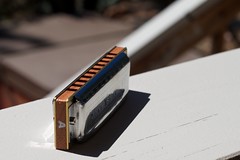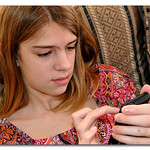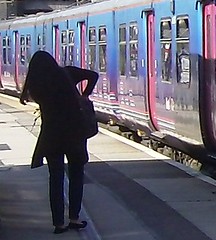 There has been much discussion about the curriculum in general in England recently, and the ICT curriculum in particular. I wrote about the latter a few months ago, in an article entitled 5 Characteristics of an Ideal Programme of Study for ICT. Now, three months and two draft versions of a new ICT Programme of Study later, I should like to put forward a few comments, both about the area of “ICT curriculum” in general, and about recent developments in the UK in particular.
There has been much discussion about the curriculum in general in England recently, and the ICT curriculum in particular. I wrote about the latter a few months ago, in an article entitled 5 Characteristics of an Ideal Programme of Study for ICT. Now, three months and two draft versions of a new ICT Programme of Study later, I should like to put forward a few comments, both about the area of “ICT curriculum” in general, and about recent developments in the UK in particular.
7 Reasons educators should blog
 Like many others, I find blogging a useful activity. So useful, in fact, that I think everyone involved in education should do it! Here, in no particular order, are my reasons.
Like many others, I find blogging a useful activity. So useful, in fact, that I think everyone involved in education should do it! Here, in no particular order, are my reasons.
Heard any good books lately?
 When it comes to “personalised learning”, which has been the mantra of the educational world for as long as I can remember, paper books offer the least personalised experience of all.
When it comes to “personalised learning”, which has been the mantra of the educational world for as long as I can remember, paper books offer the least personalised experience of all.BYOD Case Study: Sheffield High School
 Sheffield High School makes for an interesting case study in that it has not yet actually implemented a BYOD programme. The groundwork has been laid, with the school working with its parent organisation, the Girls Day School Trust, to ensure that its networking infrastructure is robust enough to support the intended developments.
Sheffield High School makes for an interesting case study in that it has not yet actually implemented a BYOD programme. The groundwork has been laid, with the school working with its parent organisation, the Girls Day School Trust, to ensure that its networking infrastructure is robust enough to support the intended developments.Typewriters? No thanks!
 There is something romantic about an old manual typewriter. The clattering of the keys sounds somewhat industrial, which connotes “industrious”. Bashing away at a typewriter is what real writers do. No spellchecker, no thesaurus, no internet, and no forgiveness if you make a mistake. So typing something that looked reasonable, and which didn’t involve too much correction fluid, gave one a sense of achievement.
There is something romantic about an old manual typewriter. The clattering of the keys sounds somewhat industrial, which connotes “industrious”. Bashing away at a typewriter is what real writers do. No spellchecker, no thesaurus, no internet, and no forgiveness if you make a mistake. So typing something that looked reasonable, and which didn’t involve too much correction fluid, gave one a sense of achievement.
BYOD Case Study: Wildern School
 Wildern School has partially implemented Bring Your Own Device, or BYOD. Students may bring their own devices in as long as the teacher and head of department concerned have agreed that phones and other devices would be useful in a particular lesson.
Wildern School has partially implemented Bring Your Own Device, or BYOD. Students may bring their own devices in as long as the teacher and head of department concerned have agreed that phones and other devices would be useful in a particular lesson.Review of Learn for Life News
 I recently discovered a fairly new educational technology and ICT news service. Published daily by UK ICT veteran Leon Cych, Learn for Life News is a welcome – and different – addition to the plethora of information sources currently available.
I recently discovered a fairly new educational technology and ICT news service. Published daily by UK ICT veteran Leon Cych, Learn for Life News is a welcome – and different – addition to the plethora of information sources currently available.
Why “different”? Because it is not just another source of news but, as Leon himself describes it, filtered news. Leon is acting as a human filter of what is currently being discussed on the UK ICT grapevine.
A is for … Assessing ICT
 How would you rate the apple pie shown in the photo? Yes, I know the first thing that comes to mind is probably “Disgusting!”, because my food presentation skills are not what they ought to be. (Believe it or not, the apple pie depicted has not been eaten.) But how you assess my efforts must depend on what exactly you’re looking for. (I realise this is kind of obvious, but please bear with me.)
How would you rate the apple pie shown in the photo? Yes, I know the first thing that comes to mind is probably “Disgusting!”, because my food presentation skills are not what they ought to be. (Believe it or not, the apple pie depicted has not been eaten.) But how you assess my efforts must depend on what exactly you’re looking for. (I realise this is kind of obvious, but please bear with me.)
BYOD Case Study: Great Ormond Street Children’s Hospital
 The unique challenge for the Children's Hospital School is balancing the need and desire to enable all long stay students to be able to access their own device with the need for security. Although this challenge is faced by other schools, the uniqueness in this case stems from the fact that 80% of the student population changes very frequently, so the school has little idea what devices students will be bringing.
The unique challenge for the Children's Hospital School is balancing the need and desire to enable all long stay students to be able to access their own device with the need for security. Although this challenge is faced by other schools, the uniqueness in this case stems from the fact that 80% of the student population changes very frequently, so the school has little idea what devices students will be bringing.BYOD Case Study: The Arnewood School Academy
 What are the potential benefits and challenges of introducing a Bring Your Own Device policy into a secondary (high) school? In this, our latest case study, we look at the experience of The Arnewood School Academy in England.
What are the potential benefits and challenges of introducing a Bring Your Own Device policy into a secondary (high) school? In this, our latest case study, we look at the experience of The Arnewood School Academy in England.
7 Ways of Making ICT More attractive
 You may not know this, but there is not a lot of difference between a Lee Oskar diatonic harmonica (the type used by blues and folk musicians) and a Hohner Blues Band harmonica. The Lee Oskar is said to have been engineered to give a “sharper” edge to the tone, which suits the blues sound, whereas the Marine Band, being slightly “softer”, works well for folk music too. Unless you’re a purist, there is probably not much in it. As someone once said:
You may not know this, but there is not a lot of difference between a Lee Oskar diatonic harmonica (the type used by blues and folk musicians) and a Hohner Blues Band harmonica. The Lee Oskar is said to have been engineered to give a “sharper” edge to the tone, which suits the blues sound, whereas the Marine Band, being slightly “softer”, works well for folk music too. Unless you’re a purist, there is probably not much in it. As someone once said:
“A difference is only a difference if it makes a difference.”
Adobe Helps Nurture Young Creative Talent with New Online Courses for UK Students
 Adobe has rolled out an exciting series of online courses called Adobe Generation, which are designed to help students between the age of 14 and 19 develop new skills that will put them in a better position when exploring career options in the creative industry.
Adobe has rolled out an exciting series of online courses called Adobe Generation, which are designed to help students between the age of 14 and 19 develop new skills that will put them in a better position when exploring career options in the creative industry.
BYOD Case Study: St Crispin’s School
 St Crispin’s School is a slightly larger-than-average secondary school serving the town of Wokingham, England. An 11-18 school, it has 1102 students. The number of students with special education needs is about average, whilst the proportion of students from ethnic minority backgrounds is below average. Relatively few students are eligible for free school meals.
St Crispin’s School is a slightly larger-than-average secondary school serving the town of Wokingham, England. An 11-18 school, it has 1102 students. The number of students with special education needs is about average, whilst the proportion of students from ethnic minority backgrounds is below average. Relatively few students are eligible for free school meals.
St Crispin’s was attracted to the idea of BYOD because, as Mike Elward, Assistant Head/Director of e-learning says
BYOD Case Study: Les Quennevais School
 Why did Les Quennevais School, in Jersey, pilot a Bring Your Own Device programme, what challenges have emerged, and how do students use their devices?
Why did Les Quennevais School, in Jersey, pilot a Bring Your Own Device programme, what challenges have emerged, and how do students use their devices?
What the mind sees
 It is interesting, isn’t it, how the mind can play tricks on you? A couple of days ago I had proof of either working too hard or of working too hard on one particular thing.
It is interesting, isn’t it, how the mind can play tricks on you? A couple of days ago I had proof of either working too hard or of working too hard on one particular thing.
Responsible Use
 The general thrust of education these days is on student-centred learning. This is often expressed by depicting on the teacher’s role as being the guide on the side rather than the sage on the stage. Regardless of whether you agree that that’s how things should be (and as it happens I don’t: see Please! No More Mantras!), the often-stated philosophy these days is that students know best.
The general thrust of education these days is on student-centred learning. This is often expressed by depicting on the teacher’s role as being the guide on the side rather than the sage on the stage. Regardless of whether you agree that that’s how things should be (and as it happens I don’t: see Please! No More Mantras!), the often-stated philosophy these days is that students know best.
But does stating that philosophy mean that it is observed in practice?
BYOD Case Study: George Spencer Academy
 George Spencer Academy is a mixed secondary school in Nottingham, England, with 1350 students aged 11-18. Although it is located in a large town, it has only a small proportion of students who are eligible for free school meals.
George Spencer Academy is a mixed secondary school in Nottingham, England, with 1350 students aged 11-18. Although it is located in a large town, it has only a small proportion of students who are eligible for free school meals.
The school decided to go down the BYOD road in order to be able to explore the potential of personal devices without incurring costs of purchase, training or technical support. The idea also fits very well with the school’s vision, which is concerned with giving a personalised learning experience to all students.
If this website disappears…
Pictures as stimulii
 I always carry a camera around with me – as well as my phone. Why? Because you never know when you might see something interesting enough to use as a stimulus for an article. And why both? Because each one gives better results in different lighting conditions. Interestingly, my camera, which boasts a Leica lens, copes less well than my phone in the dark – which is why I used my camera for the night street scenes shown here. I like the slightly out-of-focus effect, and the fact that in one of them the darkness is almost overwhelming. I think if you teach you should encourage your students to always carry a camera of some description with them at all times. And if you are a Head of Department, encourage your staff to do the same. Here are my reasons.
I always carry a camera around with me – as well as my phone. Why? Because you never know when you might see something interesting enough to use as a stimulus for an article. And why both? Because each one gives better results in different lighting conditions. Interestingly, my camera, which boasts a Leica lens, copes less well than my phone in the dark – which is why I used my camera for the night street scenes shown here. I like the slightly out-of-focus effect, and the fact that in one of them the darkness is almost overwhelming. I think if you teach you should encourage your students to always carry a camera of some description with them at all times. And if you are a Head of Department, encourage your staff to do the same. Here are my reasons.
What’s the story?
 How I hate the word “narrative”! At least, I detest the way it has been usurped by smart-suited political advisers who say things like “We need a new narrative”.
How I hate the word “narrative”! At least, I detest the way it has been usurped by smart-suited political advisers who say things like “We need a new narrative”.
But sometimes, like now, I get what they are talking about, though I prefer to use the word “story”. And my question is: what is the story, what is the whole experience, of ICT in your school?
